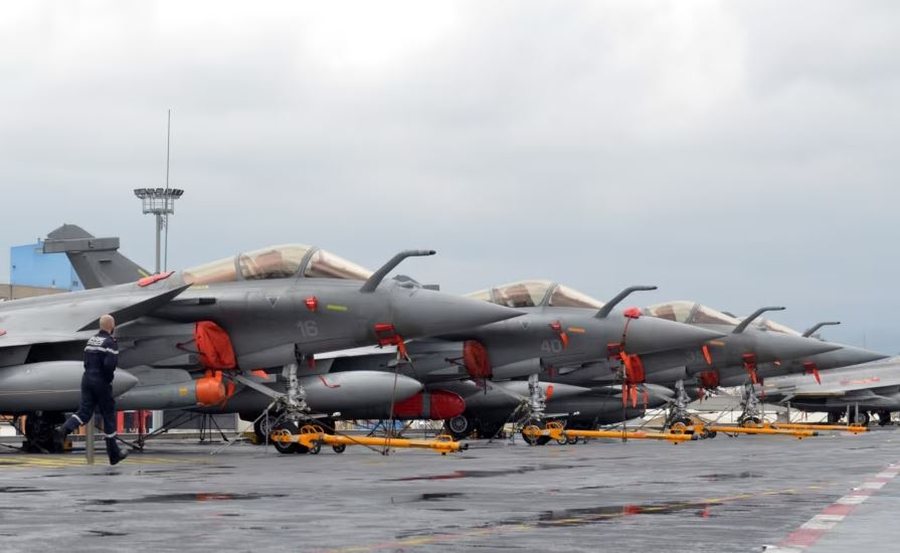
Nearly thirty years after the ceasefire in the Western Balkans, new armed drones are quietly patrolling the region, but no one knows their exact number.
The agreement on subregional arms control was signed in 1996 - a year after the end of the war in Bosnia and Herzegovina - under the auspices of the Organization for Security and Cooperation in Europe (OSCE).
It placed restrictions on the number of tanks, armored vehicles, heavy artillery, fighter jets, and attack helicopters in Bosnia and Herzegovina, Croatia, Serbia, and Montenegro.
But, today, this list is conspicuous by its absence of a deadly modern weapon: armed drones.
"Only three countries possessed armed drones in 2010. By the end of 2024, this number had increased to over 40," Antonio Prlenda, a military analyst from Sarajevo who recently defended his master's thesis on the topic, tells Radio Free Europe.
New rules of the war game
Military drones are cheaper, more mobile, and more lethal than traditional fighter jets.
They have become a favorite weapon in today's conflicts - from Ukraine, through the Caucasus to the Middle East - and everyone wants to have them in their armed forces.
The Western Balkans are no exception to this.
Serbia has purchased attack drones from China, the United Arab Emirates and Israel.
It is also developing domestic models: Pegaz, Vrabac and Komarac, which have filled the skies over this country, after - at least for now - the deal to purchase Bayraktar drones from Turkey failed.
Croatia has purchased six armed Turkish drones and is producing its own deadly mini-drones, which it has exported, among other things, to Ukraine.
According to official statements, with current capacity, this country can produce about half a million mini-drones per year.
Another NATO country, Montenegro, is quietly but increasingly increasing its military capabilities.
With a limited military budget, it has purchased reconnaissance drones from Slovenia and is investing in purchasing additional drones, intended for border surveillance.
It has also announced that it will produce it itself, in collaboration with the United States.
In Bosnia and Herzegovina, the modernization of the armed forces is hampered by a limited budget, as well as political divisions.
Apart from helicopters donated by the United States, this country has no other aircraft.
Recently, Turkey donated a drone jamming system and promised two Bayraktar drones.
Kosovo - although not part of the arms control agreement - has begun acquiring military drones, initially through a Turkish donation from Bayraktar.
Can this issue be fixed?
Sarajevo-based military analyst Antonio Prlenda believes that unmanned drones should be included either as a new, sixth category, or included in the existing classification of combat aircraft.
"However, these proposals have been blocked because, at the moment, there is no political will on the part of the signatories to do so," Prlenda tells Radio Free Europe.
In 2015, Bosnia and Herzegovina, Montenegro, Croatia and Serbia took over responsibility for implementing the agreement from the Organization for Security and Cooperation in Europe (OSCE), which had been overseeing its implementation until then.
"From that time on, direct pressure from the international factor on implementation and possible changes is no longer possible. From that time on, it depends only on the political will of the signatories themselves," says Prlenda.
Any purchase of military equipment in the region is perceived by people as an arms race, and this concern is exacerbated by statements from leading politicians.
After Croatia signed a contract to buy French Rafale fighter jets to replace Soviet MIGs, it caused a stir in the region. Serbia responded by buying the same planes.
Although all countries are well below the maximum number of soldiers and heavy weaponry agreed upon some thirty years ago, the balance of power has changed most with regard to military drones.
"The situation with drones is quite complicated, because there are a large number of different categories. Small commercial drones are relatively easy to modify. We can only talk about the larger ones, which can be classified as combat aircraft," says Aleksandar Radiq, a military analyst from Belgrade.
The sky without limits
The old arms control system in the region looks more like a relic than a protection, as all countries have introduced new and more modern weapons.
Radić emphasizes the fact that at the time the agreement was signed in 1996, Serbia had more than 155 fighter jets.
"Serbia today is not even close to that number. Great Britain has about a hundred fighter jets. The very spirit of that agreement is tied to old circumstances and changing such a document, I think, is unrealistic. We need a new document that would guarantee trust, in accordance with modern circumstances," Radic tells Radio Free Europe.
NATO and Warsaw Pact countries - from the Atlantic Ocean to the Urals - signed the Conventional Forces in Europe (CFE) Treaty in late 1990, but Russia suspended its participation in the agreement in 2007.
The subregional agreement, signed by the same countries that were signatories to the Dayton Peace Agreement, which ended the war in Bosnia and Herzegovina in 1995, was based on that Cold War treaty.
"It has served its purpose. It was adopted at the most critical time. The states that signed it have never come close to meeting the set quotas. An update is needed not only of this agreement, but also of the Vienna Document, the CFE and the nuclear weapons issues," Dragan Samardzic, a retired admiral of the Montenegrin Army, tells Radio Free Europe.
As for military drones, Samardzic says that no arms control agreement has included them and that, for now, unmanned drones are considered more of a dangerous weapon that could be used by terrorist groups than by states.
In parallel with the procurement of drones, countries in the region are also working on the procurement of integrated systems for tracking and shooting down drones.
Croatia and Serbia have smaller such systems, while, recently, Turkey donated an anti-drone system to Bosnia and Herzegovina./ REL (A2 Televizion)











